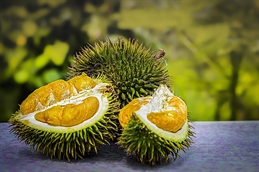
Reefer shipping trade has traditionally been driven by demand for meat and poultry products, but shipment of exotic fruits is gaining traction as technology evolves allowing transport of commodities to more markets at longer distances.
Maritime research consultancy Drewry said growth in overall seaborne reefer trade has “broadly matched” that of dry cargo over the past 10 years, expanding at an average annual rate of 3.8%.
“Growth in reefer shipping trade has been largely driven by soaring demand for proteins into swine flu-ravaged Asia, but this trend is expected to recede as domestic pig stocks recover,” the maritime research firm said.
“Future growth is expected to come from accelerating trade in exotic fruits, thanks to new technology which is lengthening potential shipping distances and opening up new markets where discretionary spend is rising,” it added.
Drewry said proteins and bananas dominate the trade, accounting for 52% of total 2019 traffic of 130.5 million tons. Meat in particular has been the driver of growth over the last 12-18 months due to significant imports into China on the back of the effects of African Swine Flu.
“But with Asian pig stocks recovering, import demand is expected to recede, leaving many to wonder what will propel future reefer trade growth?” it said.
Demand for exotic fruits expand
Nonetheless, Drewry explained that shipment of exotic fruits such as cherry, durian, persimmons and avocado, among others, are seen to boost the trade in the coming years.
“Exotics have become the rising star of the trade over the past 10 years,” the maritime research firm said, noting that according to its Reefer Annual Review and Forecast 2020/21 report, seaborne trade in exotic fruits outgrew that of all other major commodity groups, rising at an average annual rate of 5%.
“This has not been an overnight phenomenon as trees take years to bear commercial fruit. While the trade in pineapples has slowed, mangos, persimmons, durians and particularly avocados have seen soaring demand,” Drewry said.
It added that mangos – traditionally grown in Asia and the tropics – are now the second-largest exotic fruit in volume terms after pineapples, with over 1.3 million tonnes of seaborne traffic recorded in 2019 and an average annual growth rate of 5.2% over the prior 10-year period.
“This category is also benefiting from strong investment in growing regions, with larger orchards aimed at export markets rather than the small grower with a couple of trees and an ad-hoc approach to exports,” Drewry said.
“In some producing areas mangos share the supply chain of avocados, such as packing facilities, while in end-markets there is commonality in the use of ripening rooms for the ‘ready-to-eat’ experience.”
Reefer shipping to outpace dry cargo
Earlier, Drewry said seaborne perishable cargo is seen to better weather the Covid-19-induced economic storm than the dry cargo trade, given the broader resilience of the food supply chain.
Worldwide seaborne reefer trade recorded growth of just 1.7% in 2019 to 130.5 million tonnes, already its weakest rate of growth since 2015, held back by lower shipments of both deciduous and citrus fruits on the back of extreme weather conditions in Europe and drought in South Africa and Chile, though aided by soaring pork traffic into China following the outbreak of African swine fever.
The maritime research firm forecasts that seaborne reefer traffic will reach 156 tonnes by 2024, representing an average annual expansion of 3.7% which is faster than the anticipated growth in the wider dry cargo trade.
“Drewry expects the reefer trade to be more recession-proof against the economic impacts of Covid-19,” said Philip Gray, Drewry’s head of reefer shipping research.
“Near term, it will continue to benefit from African swine fever-induced protein demand into Asia. The continuing trade standoff between the U.S. and China remains a threat to trans-Pacific trade, but could provide opportunities on other routes through trade substitution, such as East Coast South America to Asia,” he added.
Bananas and fish are the biggest commodities carried in specialized reefer ships, and their largest trade route, according to Drewry, is the West Coast of South America to Europe, thanks to the dominance of the banana trade out of Ecuador.
By Charlee C. Delavin
Asia Cargo News | Hong Kong



